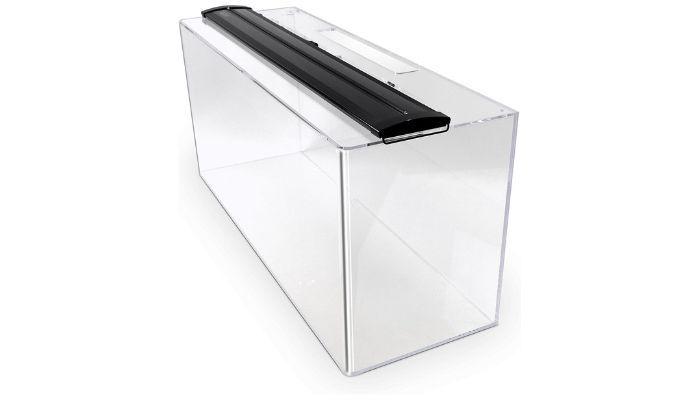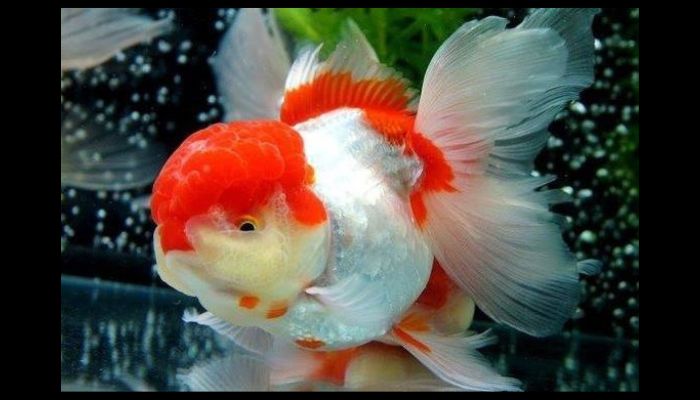Assorted Colored Fantail Goldfish are a favorite among aquarium hobbyists, and it’s no surprise why. With their graceful, fan-like tails and stunning array of colors, they make a beautiful addition to any home aquarium. Whether you’re a beginner or a seasoned aquarist, this guide will offer valuable insights into everything you need to know about assorted colored fantail goldfish, from selecting the right ones for your tank to keeping them healthy and happy.
What Are Assorted Colored Fantail Goldfish?
Assorted Colored Fantail Goldfish are a variation of the common fantail goldfish, known for their distinct dual-lobed caudal (tail) fins that fan out elegantly as they swim. What sets the assorted colored fantail goldfish apart is their stunning variety of colors. These fish come in vibrant shades ranging from red, orange, and yellow to calico patterns of white, black, and blue. Their dazzling hues make them an eye-catching centerpiece in any aquarium, and their hardy nature makes them suitable for beginner fish keepers.
Why Choose Assorted Colored Fantail Goldfish?
- Aesthetic Appeal: One of the primary reasons people choose assorted colored fantail goldfish is for their beauty. The range of colors can complement any tank setup, whether you prefer natural aquascapes or vibrant, colorful designs.
- Hardy Nature: These goldfish are relatively easy to care for and can tolerate a range of water conditions, making them a great choice for beginners.
- Peaceful Temperament: Fantail goldfish are known for their peaceful demeanor, making them great tankmates for other similarly-sized, non-aggressive fish.
Selecting the Perfect Assorted Colored Fantail Goldfish
When selecting your assorted colored fantail goldfish, there are a few things to consider to ensure you’re getting a healthy fish:
- Active and Alert Behavior: Look for fish that are actively swimming and exploring their environment. Avoid fish that appear lethargic or are floating at the surface or sinking to the bottom.
- Bright and Clear Colors: Healthy fantail goldfish will have vibrant, consistent coloring. Faded or dull colors may indicate stress or illness.
- Clear Eyes and Fins: Make sure the fish have clear, bright eyes and no visible signs of fin rot or damage. Their scales should be smooth, without any signs of ich or other infections.
Tank Requirements for Assorted Colored Fantail Goldfish
Before bringing home your new fantail goldfish, you’ll need to ensure their tank is set up correctly. Fantail goldfish are relatively easy to care for, but like any fish, they have specific needs when it comes to tank size, water quality, and environment.

Seaclear 30 Gal Show Acrylic Aquarium Combo with LED Lightng
Tank Size
Fantail goldfish need more space than you might think. While they’re often sold as “starter fish,” they can grow up to 8 inches (20 cm) in length and need plenty of room to swim. A good rule of thumb is to allow at least 20 gallons (75 liters) of water per fish. If you’re planning to keep more than one fantail goldfish, you’ll need a larger tank.
Water Quality
Maintaining clean water is essential for the health of your assorted colored fantail goldfish. Goldfish are notorious for producing a lot of waste, which can quickly lead to poor water quality if not managed properly.
- Filtration: Invest in a high-quality filtration system that can handle the bio-load of your goldfish. A filter that offers both mechanical and biological filtration is ideal.
- Temperature: Fantail goldfish prefer cooler water temperatures between 65°F and 75°F (18°C to 24°C). Avoid sudden fluctuations in temperature, as this can stress your fish.
- pH Levels: Aim for a pH between 7.0 and 8.4. Regularly test your water to ensure it stays within this range, as extreme pH levels can harm your fish.
Substrate and Decorations
While goldfish don’t have specific substrate requirements, a fine gravel or sand substrate is recommended to prevent injury to their delicate fins. Avoid sharp decorations, as fantail goldfish can easily tear their fins on rough surfaces.
Feeding Your Assorted Colored Fantail Goldfish
Feeding your assorted colored fantail goldfish a balanced diet is key to their health and vibrant coloring. These fish are omnivores, meaning they eat both plant-based and protein-rich foods.
Commercial Goldfish Food
A high-quality commercial goldfish pellet or flake food should form the basis of their diet. Look for brands that list fish meal, shrimp meal, or spirulina as the main ingredients. These provide the essential nutrients your fish need for optimal growth and health.
Fresh and Frozen Foods
In addition to commercial food, you can supplement their diet with fresh and frozen foods like:
- Blanched Vegetables: Offer them blanched peas, spinach, or lettuce as a treat.
- Frozen Bloodworms or Brine Shrimp: These protein-rich options are excellent for variety and provide a good source of nutrition.
Be mindful not to overfeed your fish, as excess food can lead to poor water quality and health problems like swim bladder disease.
Breeding Assorted Colored Fantail Goldfish
Breeding assorted colored fantail goldfish can be a rewarding experience, though it requires a bit of preparation and patience. To encourage breeding, you’ll need to create the right environment in your tank.
Breeding Setup
- Temperature Changes: Gradually lower the tank temperature to around 60°F (15°C) and then slowly increase it to around 70°F (21°C) to simulate the spring breeding season.
- Spawning Mops: Introduce soft spawning mops or fine-leafed plants where the female can lay her eggs.
- Diet: Feed your breeding pair a diet rich in live or frozen foods to encourage healthy egg production.
Raising Fry
After spawning, it’s best to remove the adult fish to prevent them from eating the eggs. The eggs will hatch within 4 to 7 days, and the fry can be fed infusoria or liquid fry food until they’re large enough to eat crushed goldfish flakes.
Common Health Issues and How to Prevent Them
Like all fish, assorted colored fantail goldfish can be prone to certain health issues. Understanding these problems and knowing how to prevent them can help ensure a long and healthy life for your fish.
Swim Bladder Disease
Swim bladder disease is common in fantail goldfish due to their rounded bodies. This condition affects the fish’s ability to swim properly, causing them to float or sink uncontrollably. To prevent this, avoid overfeeding and ensure their diet includes enough fiber (such as peas).
Ich (White Spot Disease)
Ich is a parasitic infection that appears as white spots on the fish’s body and fins. If caught early, it can be treated with over-the-counter medications available at your local pet store. Regularly testing and maintaining good water quality will also help prevent this disease.
Fin Rot
Fin rot is a bacterial infection that can cause the fins to become frayed and discolored. This condition is usually a result of poor water quality, so be sure to maintain a clean tank and perform regular water changes.
Conclusion
Assorted colored fantail goldfish are not just beautiful to look at but also make wonderful pets for both beginners and experienced aquarists. With their unique appearance and gentle nature, they’re sure to bring joy to anyone who adds them to their aquarium.
By understanding their needs—whether it’s providing the right tank environment, offering a balanced diet, or preventing common health issues—you can ensure your assorted colored fantail goldfish thrive for many years. And remember, as long as you maintain a clean, well-maintained tank and keep up with their feeding and care routine, these goldfish will reward you with their vibrant beauty and peaceful presence.
